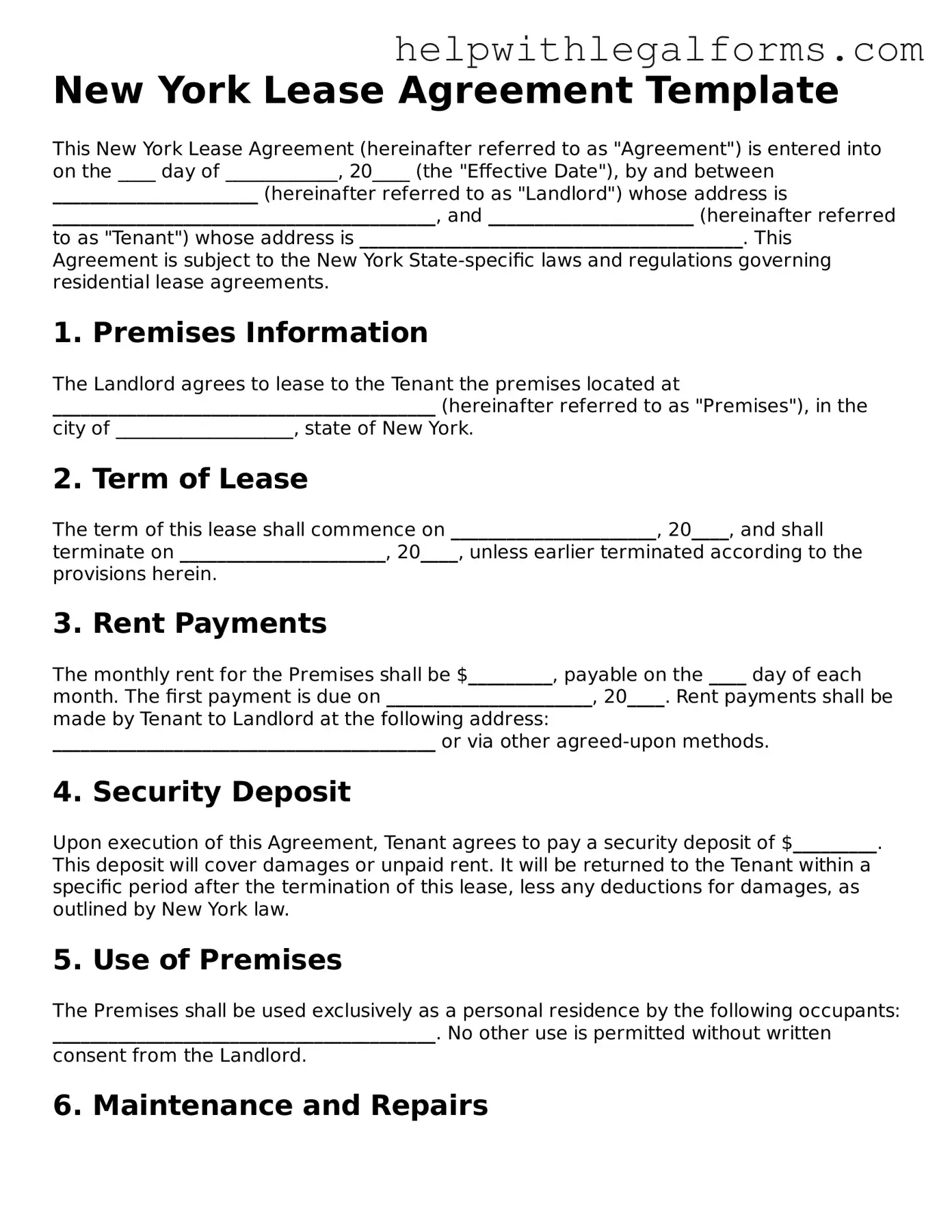New York Lease Agreement Template
This New York Lease Agreement (hereinafter referred to as "Agreement") is entered into on the ____ day of ____________, 20____ (the "Effective Date"), by and between ______________________ (hereinafter referred to as "Landlord") whose address is _________________________________________, and ______________________ (hereinafter referred to as "Tenant") whose address is _________________________________________. This Agreement is subject to the New York State-specific laws and regulations governing residential lease agreements.
1. Premises Information
The Landlord agrees to lease to the Tenant the premises located at _________________________________________ (hereinafter referred to as "Premises"), in the city of ___________________, state of New York.
2. Term of Lease
The term of this lease shall commence on ______________________, 20____, and shall terminate on ______________________, 20____, unless earlier terminated according to the provisions herein.
3. Rent Payments
The monthly rent for the Premises shall be $_________, payable on the ____ day of each month. The first payment is due on ______________________, 20____. Rent payments shall be made by Tenant to Landlord at the following address: _________________________________________ or via other agreed-upon methods.
4. Security Deposit
Upon execution of this Agreement, Tenant agrees to pay a security deposit of $_________. This deposit will cover damages or unpaid rent. It will be returned to the Tenant within a specific period after the termination of this lease, less any deductions for damages, as outlined by New York law.
5. Use of Premises
The Premises shall be used exclusively as a personal residence by the following occupants: _________________________________________. No other use is permitted without written consent from the Landlord.
6. Maintenance and Repairs
Tenant shall keep the Premises in a clean and sanitary condition, and comply with all applicable building, housing, and health codes. Repairs required due to Tenant’s misuse or neglect will be the responsibility of the Tenant.
7. Alterations and Improvements
Tenant shall not make any alterations or improvements to the Premises without the prior written consent of the Landlord. This includes, but is not limited to, painting, installing wallpaper, and drilling holes in the walls.
8. Rules and Regulations
Tenant agrees to comply with all building rules and regulations. Landlord agrees to provide Tenant with a copy of these rules and regulations before occupancy.
9. Governing Law
This Agreement shall be governed by and construed in accordance with the laws of the State of New York.
10. Signature
IN WITNESS WHEREOF, the parties have executed this Agreement as of the Effective Date first above written.
Landlord's Signature: ___________________________________ Date: ______________
Tenant's Signature: ___________________________________ Date: ______________
